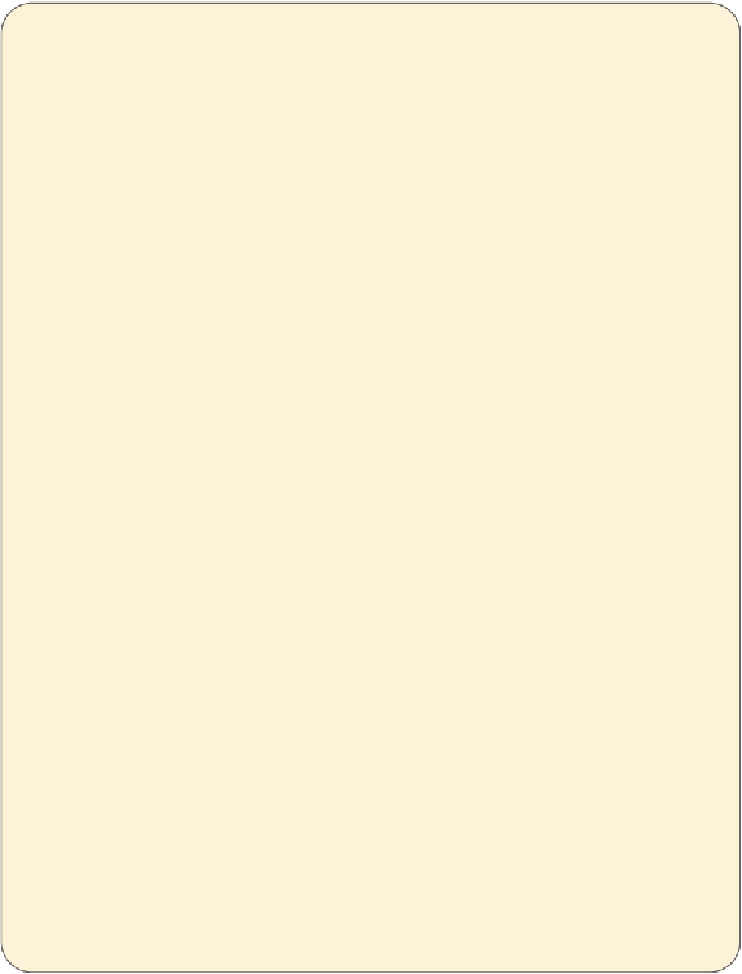Travel Reference
In-Depth Information
Despite the country's genetic homogeneity, the population is highly segregated
along political, religious, and cultural lines. Roughly speaking, the eastern seaboard
is more Unionist, Protestant, and of English-Scottish heritage, while the south and
west (bordering the Republic of Ireland) are Nationalist, Catholic, and of Irish des-
cent. Cities are often clearly divided between neighborhoods of one group or the
other. Early in life, locals learn to identify the highly symbolic (and highly charged)
colors, jewelry, music, names, and vocabulary that distinguish the cultural groups.
Latitude and Longitude:
54°N and 5°W. It's as far north as parts of the Alaskan
panhandle.
Area:
5,400 square miles (about the size of Connecticut), constituting a sixth of the
island. Northern Ireland includes 6 of the island's traditional 32 counties.
Geography:
Northern Ireland is shaped roughly like a doughnut, with the UK's
largest lake in the middle (Lough Neagh, 150 square miles and a prime eel fishery).
The terrain comprises gently rolling hills of green grass, rising to the 2,800-foot
Slieve Donard. The weather is temperate, cloudy, moist, windy, and hard to predict.
Biggest Cities:
Belfast, the capital, has 300,000 residents. Half a million
people—nearly one in three Northern Irish—inhabit the greater Belfast area. Derry
(called Londonderry by Unionists) has 85,000 people.
Economy:
Northern Ireland's economy is more closely tied to the UK than to the
RepublicofIreland.Sectarian violencehasheldbackgrowth,andtheeconomygets
subsidies from the UK and the EU. Traditional agriculture (potatoes and grain) is
fading fast, though modern techniques and abundant grassland make Northern Ire-
land a major producer of sheep, cows, and grass seed. Modern software and com-
municationscompaniesarereplacingtraditionalmanufacturing.Shipyardsarerusty
relics, and the linen industry is now threadbare; both are victims of cheaper labor
available in Asia.
Currency:
Northern Ireland uses not the euro, but the pound (£).
Exchange rate:
£1 = about $1.60.
Government:
Northern Ireland is not a self-governing nation, but is part of the
UK, ruled from London by Queen Elizabeth II and Prime Minister David Cameron,
and represented in Parliament by 18 elected Members of Parliament. For 50 years
(1922-1972), Northern Ireland was granted a great deal of autonomy and selfgov-
ernance, known as “Home Rule.” The current National Assembly (108-seat Parlia-
ment)—after an ineffective decade of political logjams—has recently begun to
show signs of rejuvenation.
Politicsaredominated,ofcourse,bytheongoingdebatebetweenUnionists(who
want to preserve the union with the UK) and Nationalists (who want to join the Re-
public of Ireland). Two high-profile and controversial figures have been at oppos-
ite ends of this debate: the elderly firebrand Reverend Ian Paisley for the Unionists
(who now serves in the British House of Lords); and assassination-attack survivor
Gerry Adams of Sinn Fein, the political arm of the IRA (who now serves in the Re-
public of Ireland's parliament). In a hopeful development in the spring of 2007, the
two allowed themselves to be photographed together across a negotiation table (a

